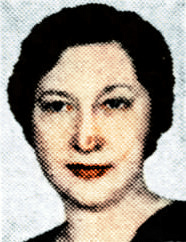
Background of news –
America’s national game
By Bertram Benedict
The 1944 World Series between the St. Louis Cardinals and St. Louis Browns rounds out a full century in which baseball has been played according to accepted rules. Such rules were first published at 1845, although the game had been played for a few years previously.
In 1907, a committee of eminent baseball authorities was created to investigate the history of America’s national game. The committee reported that the game developed, not so much from the old English game of Rounders, as from the purely American games of One Old Cat, Two Old Cat, Three Old Cat, and (especially) Four Old Cat. These developed into a game known an Town Ball, which gradually became the modern game of baseball.
However, other authorities believe that the 1907 committee was overanxious to deny a foreign origin for the game. Most Englishmen seeing baseball for the first time explain, “Why, it’s like Rounders!”
Rules drawn up in 1845
In Town Ball, the bases or posts were at first in the form of a square had become a diamond. The year previously., the diagram now used for bases and players’ conditions had been driven up by Col. Abner Doubleday.
In the rules set out in 1845, the first side to score 21 runs was the winner. A batter was out if his hit was caught on the first bounce, or if he was struck while between bases by a ball thrown by an opponent.
The first record of a game dates from 1846. Uniforms appeared in 1849. It was not until 1883 that umpires were paid for their services. In fact, no salaries were paid players until after the Civil War. For a long time, there was a limit only on the diameter of the bat, not on its length. The pitcher was allowed to take a number of steps, as in cricket, before delivering the ball.
After the Civil War, players began to receive money. The first team of full-time professionals was organized in 1869. It often made more than 100 runs in a game. With the advent of professionalism came the use of gloves, and of masks and breast pads for the catchers, also the extensive use of curve balls by pitchers.
Professionals resented
For a time, amateurs resented the professionalization of the game, and a line was drawn between amateurs and professionals, as in tennis today. Four of the early professional teams had names which survived into the modern baseball era – the Red Stockings of Cincinnati, the Athletics of Philadelphia, the White Stockings of Chicago, the Nationals of Washington.
From 1870 to 1875, the game became corrupted with rowdyism and bribery, and popular interest in it died out. To replace the game on a firm and popular basis, the National League was formed in 1876; it calls itself the oldest body of organized sports in the United States.
The present membership of the National League dates from 1900, when it was reduced from 12 clubs to eight. In the same year, the National League was challenged by the American League, formed from the old Western League. Peace between the two major leagues was achieved in 1903, and the World Series was initiated in 1905 (the winners in the two leagues had played against each other in 1903, but not in 1904).


